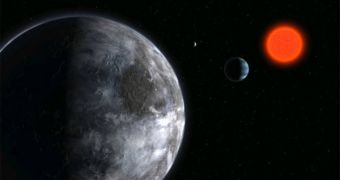The quest for life in other parts of the Universe has to start with finding the right star, experts say, referring to the fact that exoplanets need to have an “indulgent neighbor,” if they are to stand any chance of developing an atmosphere, and maybe even liquid water. That is to say, they have to be within a star's “habitable zone,” a fairly small area around the celestial body where the temperatures are just right to allow for the formation of liquid water.
Earth is located dead-center in such a zone around the Sun, and for us the conditions are just right to allow the development of complex life. But researchers engaged in the Living with a Red Dwarf program wanted to learn if such a development was sustainable on exoplanets orbiting red dwarfs, or M dwarfs. They looked at several key aspects that defined most of the planets living in a habitable zone, and also found out some new details about how such a star would influence a closely orbiting planet.
Because red dwarfs are very small, even in comparison to our own Sun, their habitable zone is very close to their actual surface. That is to say, an Earth-like planet that would circle such a body would have to be closer to its surface than Mercury is to the Sun, just to allow for the formation of liquid water.
But the problem with this is that such a proximity would most likely have adverse effects on the planet itself, in that the large gravitational pull it would experience would prevent it from spinning around its axis. A hypothetical exoplanet would thus remain in a tidally locked orbit around the dwarf, much like the Moon is always facing our planet as it revolves around us.
A tidally locked planet would have a dark side and a bright one, but temperatures on the dark side would most likely be very cold, which could, in theory, freeze the entire atmosphere, not leaving any to be “stretched” to the regions of the planet under direct sunlight. The red dwarfs have made a bad habit of emitting a lot of solar flares, of the kind that can easily strip the atmosphere off a neighboring planet, so, even if the bright side is warmer and has an atmosphere, it runs the risk of having the gases stripped from it several times per day. Large X-ray and gamma-ray emissions also have the potential to sterilize the entire surface of such an exoplanet very easily.

 14 DAY TRIAL //
14 DAY TRIAL //